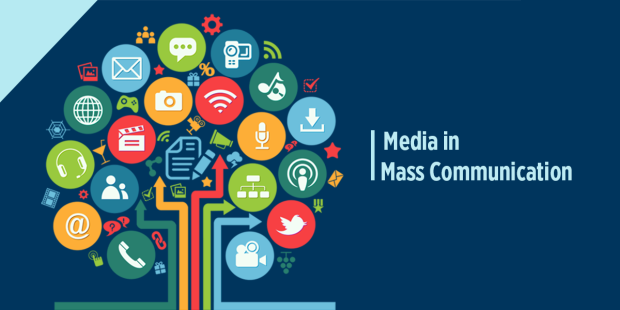Media of Mass Communication in this era, Now let us turn to how various forms of media have been used for the purposes of mass communication. Mass media have traditionally been divided into two basic types: print and electronic (or broadcast). Print media (i.e., newspapers and magazines), of course, disseminate information through the production and distribution of paper copies. In contrast to electronic media, print media tend to be more permanent, or at least they were before the advent of widespread video and audio recording. Print media also require literacy of the audience. There are no bandwidth limits in print media, whereas there has traditionally been a finite number of possible radio frequencies and television channels (though today, due to technological advances, these are rapidly increasing in number). There is no inherent limit to the number of newspapers or magazines that may be published. In general, print media lend themselves […]
Datesheet of M. Sc. Mass Communication Autumn 2012
Allama Iqbal open University, Islamabad Department of Mass Communication Datesheet of M. Sc. Mass Communication Autumn 2012 Semester 3 Sr. Code Day Date From To 1 5635 MON 10/12/12 1400 1700 2 5636 WED 12/12/12 1400 1700 3 5637 FRI 14/12/12 1400 1700 4 5638 MON 17/12/12 1400 1700
What are different types of print media? Which one is effective most in Pakistani Society?
PRINT MEDIA : Print media includes those media of communication which are controlled by space rather than time. It can be read at any available time and can be kept for record. Following are the major print media of mass communication. a) Books b) Newspapers c) Magazines Books : In the past books was not a mass medium but privilege of the elite class. There were two reasons for that. Firstly, books were not printed but transcribed by hand. Secondly, the low literacy level in the masses limited books exclusively to a small fraction of the society. It was the nineteenth century which saw book as a mass medium. In the contemporary world, book is one of the most effective mass media. It is the best source of education. However, it should not be talent merely as an educational tool., It is the best and cheapest means of storing and […]
Effects of mass media on society
Effects of mass media on society Effects of Mass Media can be definedas any change induced directly or indirectly through newspapers, films, radioand television. In the 19th century, the communication experts were of the viewthat access by the mass of population to the printed word might turn docilityinto uprising. The new man medium of cinema was similarly accused of wide rangeof effects while T.V. in the eyes of some is responsible for many of the illsof our time as though such media could be somehow divorced from social,political and cultural environments which produce them. The timing of communication process,writes C.Seymour-Ure in the Political Impact of Mass Media (UK contable, 1974),is probably one of the most important determinants of mass media effects. Ifthe timing is right, the media can often be the arbiter of crisis, by being inthe most prominent position to define it. Because, of the agenda settingtechnique, the media […]
Media Hegemony
Media Hegemony The assumption of media hegemony is that the ideas of the ruling class become ruling ideas in society. According to this approach, the mass media are controlled by the dominant class in society which uses it as a vehicle for exerting control over the rest of society. Media hegemony is rooted in the Marxist economies.They argue that media contents in USA are shaped to suit the interests of the capitalists. While commenting on media hegemony, Adelheid says that it seems to involve at least three assumptions that could be treated with evidence: The socialization of journalists involves guidelines, work routines and orientations replete with the dominant ideology. Journalists tend to cover topic and present news reports that are conservative and supportive of the status quo. Journalists tend to present pro-American and negative coverage of foreign countries, especially Third World nations. According toWerner J. Severin and James W. Tankard […]
Gate Keeping in Media
Gate Keeping The term gatekeeping was originally used by Kwrt Lewin in his Human Relations (1947) to refer to (1) theprocess by which a message passes through various gates as well as (2) thepeople or groups who allow the message to pass (gatekeepers), may be individualsor a group of persons through whom a message passes from sender to receivers. A camera-person is a vivid example of a gatekeeper, who selects certain area for photographing which are then shown to the viewers. Editors of newspapers,magazines and publishing houses are also gatekeepers as. they allow certain information to get through and filter other information. The selection and rejection ofmaterial is made according to a set of criteria determined by a number of factors such as the gatekeepers, back-ground, education, up-bringing and attitudes to the world plus the values, norms and traditional Wisdom of the organisation for which the gatekeeper works. History and […]
